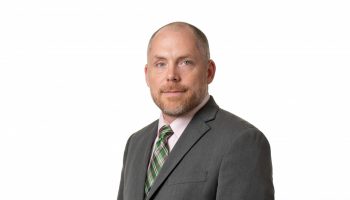
Mountain lions and tigers and cougars, oh my.
National Geographic wildlife photographer Steve Winter will discuss his work in the field with big cats and small communities during his lecture at 10:45 a.m. Tuesday, July 9 in the Amphitheater, as part of Week Three, “A Planet in Balance: A Week in Partnership with National Geographic Society.”
Much of Winter’s work for National Geographic has revolved around endangered species of big cats like tigers, jaguars and cougars. One of his most iconic images, the Hollywood Cougar, sparked the creation of the largest wildlife overpass in the world, located in Los Angeles.
“It’s a singular animal, but it has become a spokesperson for cougars and mountain lions, primarily in the LA area, but (also) animals all over that area,” he said. “So photography has immense power.”
Winter has photographed big cats all over the world, and has seen firsthand how people often misunderstand the importance of their relationship with these predators.
For example, when Winter was photographing jaguars in Argentina, he witnessed how local ranchers were killing the jaguars because they believed the cats were responsible for the deaths of their cattle. However, Winter said, when local scientists researched the issue, they found that only 1% of cattle deaths were due to the jaguars. Armed with this knowledge, the ranchers changed their attitudes and actions toward the predators.
“With proper information, they could change that behavior by their cowboys, but they would need to know the facts,” Winter said. “And it turned out, the facts were vitally important.”
This is one of many experiences Winter has had concerning changing attitudes toward predators, especially in parts of the world where poaching for medicinal purposes, or wealth and status, occurs because of cultural and economic norms.
“There has to be a different way to look at this and a different way to approach the problem,” Winter said.
Working so much with big cats has made Winter an advocate for the protection of wildlife and the natural world. Putting political and religious differences aside, Winter said, humans are animals like any other, and the only ones intelligent enough to both cause and prevent their own destruction.
“We are creatures that exist only because we live in a perfect world naturally,” Winter said. “Without the forces that give us oxygen, and the oceans — without the grasslands, mountains and forests that provide 75% of fresh water, we would not exist. We exist because of the planet in which we live, so that means we’re all in this together.”
Winter’s stories of big cats are the perfect example of how humans can find balance with wildlife, since big cats often live in populated areas as well as forested ones. Winter will talk about Siberian tigers, North American cougars, South American jaguars and other big cats.
Environmental issues often seem too big for any one person to face head-on, so Winter said his lecture will focus on the ability of the individual to connect with nature on a smaller level every day.
“Because I work with big cats, I say if we can help save big cats, we can help save ourselves,” Winter said. “But you need to understand the importance of the natural world to our everyday lives.”
Winter would like his Chautauqua audience to consider the first time they went to a national park, or a time they took a walk through the woods on a day off, and the way being in nature made them feel and how it affected them on the most personal level. Protecting nature, he said, starts on a local scale.
“If I show a small village that can find an answer … then we can find that on a larger scale,” Winter said.
Despite the doom and gloom of much environmental news, Winter remains optimistic about humanity’s ability to fix environmental problems and said his talk “has plenty of laughs.”
“The change is there already,” Winter said. “We have the technology, but there are roadblocks in the way, which are economies based on an old-fashioned way of powering the industries, our homes, and things like that. … We do have to realize that there is hope — and move towards that hope — and stay positive, because negativity does nothing but tear us apart. It does nothing.”




